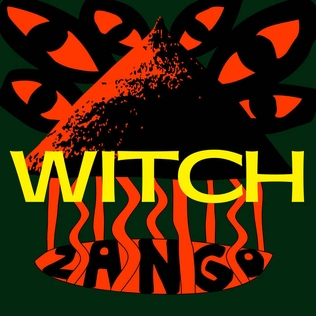Related Research Articles

Kenneth Kaunda, also known as KK, was a Zambian politician who served as the first president of Zambia from 1964 to 1991. He was at the forefront of the struggle for independence from British rule. Dissatisfied with Harry Nkumbula's leadership of the Northern Rhodesian African National Congress, he broke away and founded the Zambian African National Congress, later becoming the head of the socialist United National Independence Party (UNIP).
Rock is a broad genre of popular music that originated as "rock and roll" in the United States in the late 1940s and early 1950s, developing into a range of different styles from the mid-1960s, particularly in the United States and the United Kingdom. It has its roots in 1940s and 1950s rock and roll, a style that drew directly from the blues and rhythm and blues genres of African-American music and from country music. Rock also drew strongly from genres such as electric blues and folk, and incorporated influences from jazz and other musical styles. For instrumentation, rock has centered on the electric guitar, usually as part of a rock group with electric bass guitar, drums, and one or more singers. Usually, rock is song-based music with a 4
4 time signature using a verse–chorus form, but the genre has become extremely diverse. Like pop music, lyrics often stress romantic love but also address a wide variety of other themes that are frequently social or political. Rock was the most popular genre of music in the U.S. and much of the Western world from the 1950s to the 2010s.

Zambia, officially the Republic of Zambia, is a landlocked country at the crossroads of Central, Southern and East Africa. It is typically referred to being in South-Central Africa or Southern Africa. It is bordered to the north by the Democratic Republic of the Congo, Tanzania to the north-east, Malawi to the east, Mozambique to the southeast, Zimbabwe and Botswana to the south, Namibia to the southwest, and Angola to the west. The capital city of Zambia is Lusaka, located in the south-central part of Zambia. The population is concentrated mainly around Lusaka in the south and the Copperbelt Province to the north, the core economic hubs of the country.

The music of Kenya is very diverse, with multiple types of folk music based on the variety over 50 regional languages.

Popular music of the United States in the 1970s saw various forms of pop music dominating the charts. Often characterized as being shallow, 1970s pop took many forms and could be seen as a reaction against the high-energy and activist pop of the previous decade. It began with singer-songwriters like Carole King and Carly Simon topping the charts, while New York City saw a period of great innovation; hip hop, punk rock and salsa were invented in 1970s New York, which was also a center for electronic music, techno.

The music of Zambia has a rich heritage which falls roughly into categories of traditional, popular and Christian music.
Psychedelic soul is a music genre that emerged in the late 1960s and saw Black soul musicians embrace elements of psychedelic rock, including its production techniques, instrumentation, effects units and drug influences. It came to prominence in the late 1960s and continued into the 1970s, playing a major role in the development of funk and disco.
Now-Again Records is a Los Angeles–based music imprint that specializes in reissues and compilations of funk, soul, and psychedelic rock from the 1960s to the 1980s. Founded in 2002 by Eothen "Egon" Alapatt as a subsidiary of Stones Throw Records, the organization has since grown into an independent label with a vast global catalog and its own roster of contemporary artists.
Afro rock is a style of rock music with African influences. Afro rock is a dynamic interplay between Western rock music and African musical elements such as rhythm, melodies and instrumentation. Afro rock bands and artists in the late 1960s and early 1970s included Osibisa, Assagai and Lafayette Afro Rock Band.
Psychedelic music is a wide range of popular music styles and genres influenced by 1960s psychedelia, a subculture of people who used psychedelic drugs such as 5-MeO-DMT, DMT, LSD, mescaline, and psilocybin mushrooms, to experience synesthesia and altered states of consciousness. Psychedelic music may also aim to enhance the experience of using these drugs and has been found to have a significant influence on psychedelic therapy.
Popular music is music with wide appeal that is typically distributed to large audiences through the music industry. These forms and styles can be enjoyed and performed by people with little or no musical training. It stands in contrast to both art music and traditional or "folk" music. Art music was historically disseminated through the performances of written music, although since the beginning of the recording industry, it is also disseminated through recordings. Traditional music forms such as early blues songs or hymns were passed along orally, or to smaller, local audiences.
Bangladeshi rock music, or Bangla rock music, is a style of music in Bangladesh that is derived from British and American rock music, mixed with the Bengali classical and Adhunik musical styles from the 1960s. The genre was introduced in the 1960s by a few bands who began developing a distinctive rock sound. Bangladeshi rock is commonly divided into two categories: East Pakistan rock, and Bangladesh rock. From the 1970s to the 2000s, it was one of the nation's most popular musical genres.
Witch are a Zamrock band formed in the 1970s. Widely seen as the most popular Zambian band of the 1970s, WITCH, was headed by lead vocalist Emanuel "Jagari" Chanda. The band formed during Zambia's post-independence golden days, but by the late 1970s, economic collapse and increasing government authoritarianism saw WITCH, like most Zamrock bands, fading away. The band was revived in 2012 after reissues of their records became popular abroad.

Psychedelic funk is a music genre that combines funk music with elements of psychedelic rock. It was pioneered in the late 1960s and early 1970s by American acts like Sly and the Family Stone, Jimi Hendrix, and the Parliament-Funkadelic collective. It would influence subsequent styles including '70s jazz fusion and the '90s West Coast hip hop style G-funk.
The Peace were a zamrock band, formed in the Chamboli Mine Township of Kitwe, Zambia in the early 1970s.
Nashil Pichen Kazembe (1932–1991) was a Zambian singer from Kaputa District in the Luapula Valley, who gained prominence in the 1970s. He spent a large part of his life in Nairobi, Kenya, where he collaborated with fellow Zambia emigre Peter Tsotsi and Benson Simbeye. As members of Eagles Lupopo Band they sang 'patriotic songs' praising President Kenneth Kaunda and commenting on various social issues.
Mike Nyoni was a Zambian musician who rose from the band Born Free which was founded in 1972 by bandleader, drummer, and vocalist Nicky Mwanza, but the band never recorded until a complete personnel change. Star-in-the-making Mike Nyoni joined as vocalist and lead guitarist. The Band is known for the album Mukaziwa Chingoni.
Amanaz was a Zamrock band founded in 1973 in Kitwe, Zambia. The group released their only album, the acclaimed Africa, in 1975. Amanaz drew influences from American and British rock of the late 1960s–early 1970s, especially the music of Jimi Hendrix, and from traditional Zambian music, identifiable in Watson Lungu's drumming and Keith Kabwe's vocals.
Never Forget is a song by Zambian singer and rapper Sampa the Great featuring fellow Zambian rapper Chef 187 and fellow Zambian singers Tio Nason & Mwanjé. It was released on June 29, 2022, as the third single from the former's second studio album As Above, So Below.

Zango is the eighth studio album by Zambian band Witch. It was released on 2 June 2023 on Desert Daze Sound in partnership with Partisan Records, nearly 40 years after Witch's previous studio album, 1984's Kuomboka. It is also the band's first album since 1976 to feature frontman and co-founder Emmanuel "Jagari" Chanda.
References
- 1 2 3 4 5 6 7 8 9 10 11 12 13 14 S, Henning Goranson; Press, berg for Think Africa; Network, part of the Guardian Africa (22 July 2013). "Why Zamrock is back in play". the Guardian. Retrieved 5 December 2022.
- 1 2 3 "Zamrock: An Introduction to Zambia's 1970s Rich & Psychedelic Rock Scene | Open Culture" . Retrieved 5 December 2022.
- 1 2 WITCH on Dusted Magazine (15 April 2010)
- 1 2 3 4 5 "We're a Zambian Band". the Appendix. 5 August 2014. Retrieved 28 May 2021.
- ↑ "Salt and thunder: The mind-altering rock of 1970s Zambia". Music in Africa. 11 December 2015. Retrieved 28 May 2021.
- ↑ "Out Now: Welcome To Zamrock! Vols. 1 & 2". Now-Again Records. Retrieved 28 May 2021.
- ↑ "One Zambia, one nation". africasacountry.com. Retrieved 7 December 2022.
- ↑ Zambia, Muze Trust-. "zamrock". muzeestelleprogramme. Retrieved 6 March 2021.
- 1 2 3 "Zamrock: An Introduction". daily.redbullmusicacademy.com. Retrieved 25 May 2017.
- ↑ "Zambia". www.unaids.org. Retrieved 6 March 2021.
- 1 2 3 Balmont, James (5 July 2021). "Witch: the glory and tragedy of Zambia's psych-rock trailblazers". the Guardian. Retrieved 5 December 2022.
- ↑ "Zamrock - Music Genres - Rate Your Music". rateyourmusic.com. Retrieved 5 March 2021.